 There are many types of vertigo and many possible treatment options. Most of them unfortunately very ineffective.
There are many types of vertigo and many possible treatment options. Most of them unfortunately very ineffective.
So, you can imagine it made quite a stir when a new study revealed that one vitamin can cure two of the most common types of vertigo.
What’s more, this vitamin can be found almost everywhere and is dirt-cheap.
Benign paroxysmal positional vertigo is the most common type of vertigo and it’s caused by calcium crystals finding their way into the little semicircular canals in your inner ear.
They irritate the nerve hairs that send balance information to your brain, the signal gets scrambled on the way there and the world spins for you even though you’re sitting still.
We already know that BPPV can be caused by a lack of vitamin D, but a new study in the journal Frontiers in Neurology shows the link may be even stronger than we thought.
Vitamin D deficiency might cause this type of vertigo because it helps your body to absorb calcium. It’s essential, in fact, so if you don’t have enough, and your body can’t absorb calcium properly, you end up with bits floating around your body instead of being absorbed by your bones.
That’s why calcium crystals turn up in your inner ears, and why you get BPPV.
But the new study shows that another type of vertigo, called vestibular neuritis, may also be caused by low vitamin D levels.
Vestibular neuritis happens when the vestibular nerve in your inner ear gets inflamed. This is the one that collects all the balance and head position information from around your inner ear and then sends it to your brain to be interpreted.
But if the nerve is inflamed, your brain receives bad information, which is why you get vertigo, nausea, and vomiting.
Up to now, scientists thought that a viral infection in your inner ear was the most likely cause, but the authors of the new study wondered whether inflammation throughout the body might be a factor.
They found that previous research pointed to vitamin D deficiency as a partial cause for some inflammatory conditions, and to find out if it was contributing to vestibular neuritis too, they recruited 59 patients who were diagnosed with this inner ear condition at Hwa Mei Hospital, University of Chinese Academy of Science, between March 2017 and March 2019.
They matched them with 112 random patients who didn’t have vestibular neuritis to see which group had the lowest levels of vitamin D in their blood.
They collected all their other biographical and health information to ensure that no other condition interfered with their findings.
On average, they found that the vestibular neuritis sufferers did have lower vitamin D levels in their blood than the matched controls did: 19.01 versus 22.94 nanograms of vitamin D per one milliliter of blood.
And also, while only 34.8 percent of the non-vertigo volunteers had a low vitamin D score, 61.0 percent of the vestibular neuritis sufferers did.
So. if you want to avoid different forms of vertigo, you could spend around 20 minutes a day in direct sunlight with bare arms. That way you’ll absorb the ultraviolet for your body to convert into vitamin D. Or just take vitamin D supplements for a couple of weeks and see what happens.

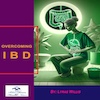 Overcoming IBD
Overcoming IBD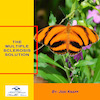 Multiple Sclerosis
Multiple Sclerosis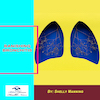 Banishing Bronchitis
Banishing Bronchitis Gum Disease Gone
Gum Disease Gone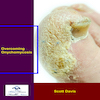 Overcoming Onychomycosis
Overcoming Onychomycosis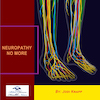 Neuropathy No More
Neuropathy No More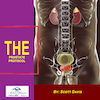 The Prostate Protocol
The Prostate Protocol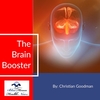 Brain Booster
Brain Booster
 Ironbound
Ironbound
 Solution for Shingles
Solution for Shingles
 The Bone Density Solution
The Bone Density Solution
 The Ultimate Healing Protocol
The Ultimate Healing Protocol
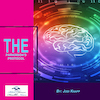 The Parkinson's Protocol
The Parkinson's Protocol
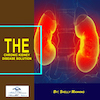 The Chronic Kidney Disease Solution
The Chronic Kidney Disease Solution
 Overthrowing Anxiety
Overthrowing Anxiety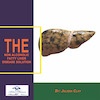 The Fatty Liver Solution
The Fatty Liver Solution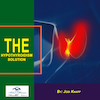 The Hypothyroidism Solution
The Hypothyroidism Solution
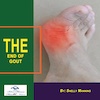 The End of Gout
The End of Gout The Blood Pressure Program
The Blood Pressure Program
 The Oxigized Cholesterol Strategy
The Oxigized Cholesterol Strategy
 Stop Snoring And Sleep Apnea Program
Stop Snoring And Sleep Apnea Program
 The Arthritis Strategy
The Arthritis Strategy The Vertigo & Dizziness Program
The Vertigo & Dizziness Program The 3-Step Diabetes Strategy
The 3-Step Diabetes Strategy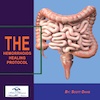 Hemorrhoids Healing Protocol
Hemorrhoids Healing Protocol The Erectile Dysfunction Master
The Erectile Dysfunction Master Weight Loss Breeze
Weight Loss Breeze The IBS Program
The IBS Program The Insomnia Program
The Insomnia Program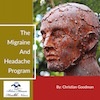 The Migraine and Headache Program
The Migraine and Headache Program The Neck Pain Solution
The Neck Pain Solution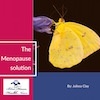 The Menopause Solution
The Menopause Solution The Ejaculation Master
The Ejaculation Master The TMJ Solution
The TMJ Solution The Acid Reflux Solution
The Acid Reflux Solution The Fibromyalgia Solution
The Fibromyalgia Solution The Psoriasis Strategy
The Psoriasis Strategy